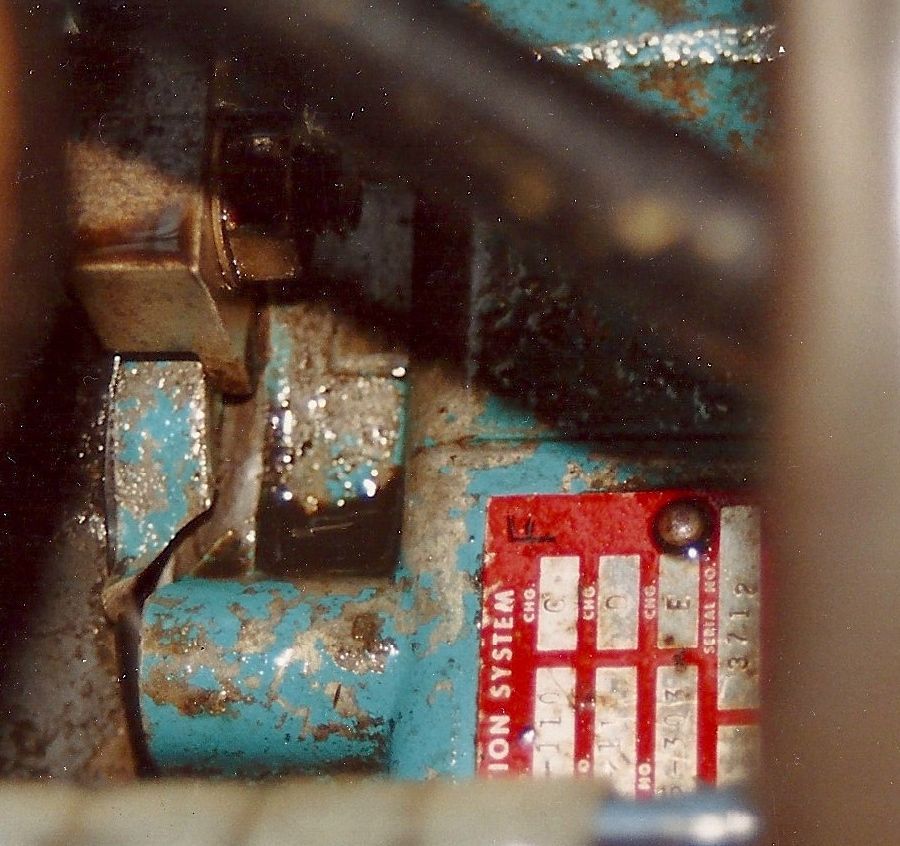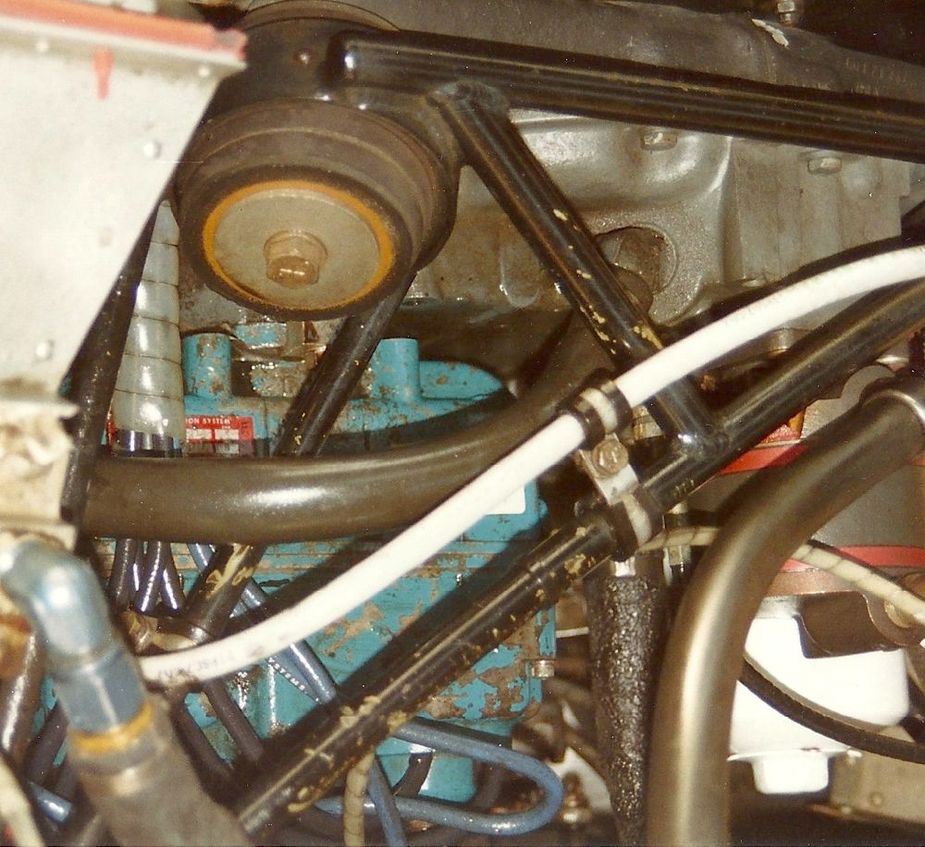EuroGA has a 2hr edit window, for very good reasons which anyone familiar with certain pilot forums will understand 
Of course we will happily fix anything beyond that if there is a serious issue.
I found these photos from 1992 showing the dual mags having failed on the M20J I part owned. We’d noticed the odd oil drip and assumed it was a minor oil leak that we’d get fixed at the next check. One day something told me it was time to take the cowling off. The flange had failed and the mags were hanging off the back of the engine, held in place only by the various hoses and leads in the area. To be clear, until the moment I took the cowling off, we were still flying it …
It is a design that does not pass the “what were you thinking?” test – mainly in my view for the way it is a huge brick hanging on a small flange in a vibration environment. It seems a ridiculous compromise on robustness to save a little money or gain a little space. I’m less convinced that the design necessarily needs careful torquing – as the load from overtightening would be on the little clamps not on the mag itself.


There’s a Lycoming SB with modified dual magneto mounts.
I totally agree it’s a complete crap design and nothing I dislike more about my aircraft than that. The other day I met a retired aircraft mechanic who recognized my plane and said that this was the one he had this terrible magneto trouble with 20 years ago — the dual mag would always get loose and then the timing go totally wrong. Oops!
However, I recommend everybody to do a single magneto test at 65% cruise power and altitude. If you believe you can fly on one magneto, you’re up for a surprise… I’ve done it 2 years ago over Athens. Not again anytime soon 
What happened, Achim? There is a loss of power, sure…
I check the magneto clamps on every preflight. The upper one is especially visible through the prop TKS refill door. You need a good light to shine down there.
Do the test, Peter, I’m curious! If you get the same result as I did, I guess you would overhaul the engine, replace the airframe and redo your IR 
EGTs skyrocket and I got a loud explosion, thought my co had fired a gun next to my ear. Was at FL150 and 70% BHP. I will never ever try that again.
and I got a loud explosion, thought my co had fired a gun next to my ear. Was at FL150 and 70% BHP. I will never ever try that again.
If you do an airborne mag test, you have to close the throttle should any cylinder cease to fire properly when on half-mag, and switch to BOTH before re-opening the throttle. Otherwise you get a backfire (from the exhaust filling up with unburnt fuel from that cylinder) which could damage the exhaust.
Most likely one of your cylinders did cut right out.
I have done an airborne mag test a number of times.
achimha wrote:
EGTs skyrocket and I got a loud explosion, thought my co had fired a gun next to my ear. Was at FL150 and 70% BHP. I will never ever try that again.
I suspect that there were problems with your ignition system when you made the test.
I’ve made dozens of in-flight mag checks and never had anything other than “normal” results, ie. small loss of power and higher EGTs.
The in-flight mag test is a useful and important way of stress testing the ignition system’s performance. In the words of “Savvy Analysis”, “it is normal for engines to run a bit rougher on one magneto than they do on two, but they should not run change-of-underwear rough”. You may well have had an imperfect plug or lead or mag that are fine at full power and sea level but not good enough for FL150/70%.
The EGT rise isn’t quite what it appears to be. An EGT probe is not actually measuring the temperature of the exhaust gas. What is happening is that the EGT probe is getting heated up by a pulse of hot gas. It’s steady state is the temperature it ends up being when heated with a stream of pulses. Think of waving a cigarette lighter over your thumb. Sure your thumb warms up, but not to the temperature of the flame
When you switch to one mag, the flame front has to cross the whole cylinder – instead of two meeting in the middle. The pulse of gas is therefore of longer duration, but almost certainly the gas is the same temperature. Because the pulse is longer, the EGT probe gets heated up more. This time you are waving the same lighter over the same thumb, but more slowly. The probe is reading higher, but no real harm is being done to the engine.
Peter wrote:
If you do an airborne mag test, you have to close the throttle
That was not compatible with my IFR flight plan 
Obviously I knew what was going on but it was a scary encounter, especially for my passenger…
Michael wrote:
I suspect that there were problems with your ignition system when you made the test.
Yes, the timing wasn’t great which I fixed after the flight. Dual mags are such a pain because you can’t really adjust them individually. After the episode I changed the timing inside and now it’s as good as it can be with a dual mag. Of course in flight tests of mags at cruise power and high altitude are good because even the worst magneto will work at MSL and half idle but as I described, it can be an unpleasant experience which is why I’m not an advocate of doing it.
I’d consider this Electoair just for the benefit of having two mags. Hope they will obtain EASA STCs. This piece-of-shit engineering by Lyco drives me crazy, really want to get rid of the dual mag. The image posted by @Alan_South is super scary as I know exactly how that can happen and that nobody is immune.
Agreed that the dual mag is a POS, that said I have reserves with the after-market IE systems :
I have a client who is AOG right now because of a problem with the LASAR IE system that was installed new just 5 years and 300 hours TIS.
Champion Aeropsace bought the LASAR IE system and they now want to kill it. The result is that parts are either no longer available or outrageously expensive.
Further, I cannot repair it myself and the mags have to be sent to about the only shop that still deals with them in Canada.
A PITA !